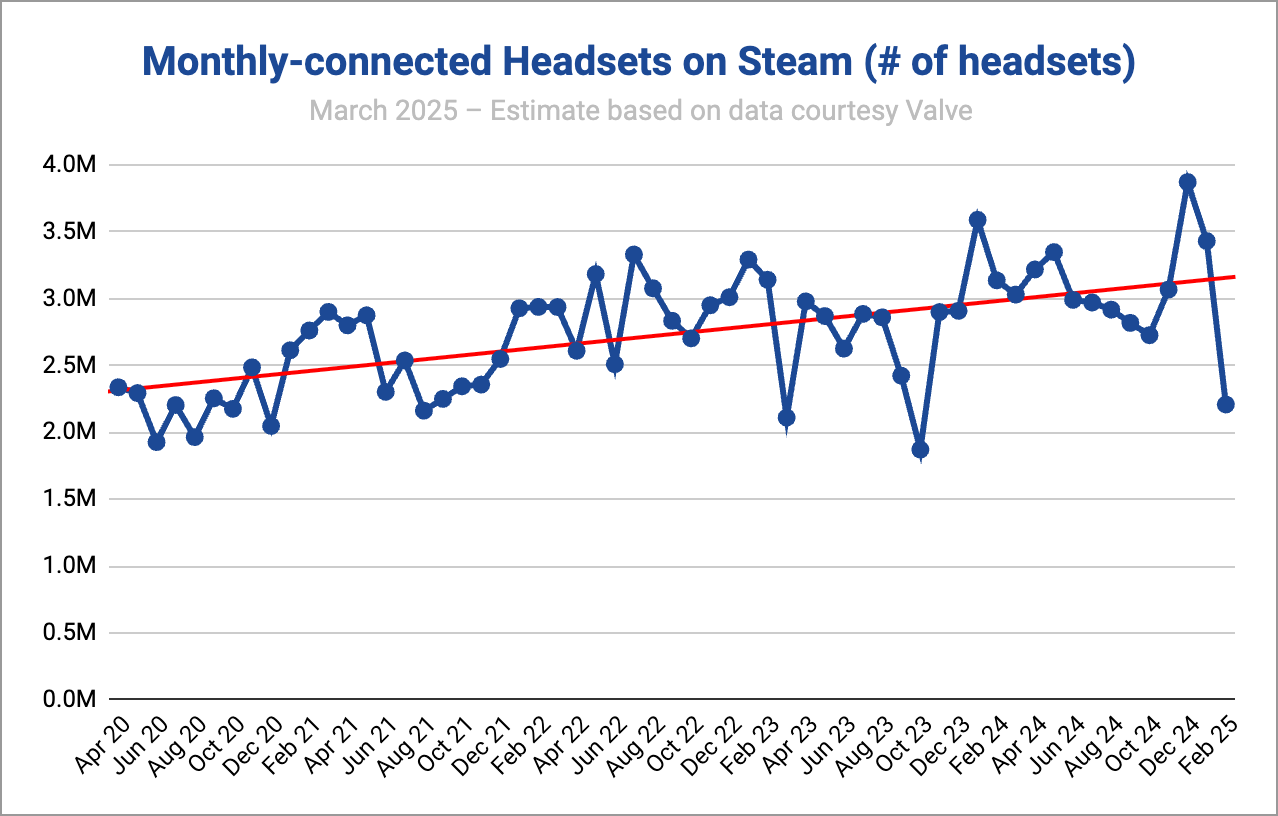In the ever-evolving world of extended reality, the past five years have been nothing short of transformative. We’ve watched as standalone headsets gained popularity and tech giants like Apple made their entrance—soon to be followed by Google. Yet, amidst all this, the PC VR platform has continued its quiet, steady ascent.
Reflecting on these changes, I couldn’t have predicted this landscape back in early 2020. Imagine hearing that Facebook no longer bears its original name. Or that it did away with the ‘Oculus’ brand, once synonymous with VR. Yet, even with those shifts, Meta’s standalone Quest headset somehow rose to become the dominant force in the VR market.
Who would’ve thought Apple would plunge into the VR scene with a headset priced at a staggering $3,500? And right on its heels, Google would unveil a complete Android XR system powering a flagship headset crafted by Samsung. Oh, and let’s not overlook Microsoft’s surprising move to discontinue its Windows MR platform, all while letting HoloLens fade into the background (though, maybe that part was somewhat unsurprising).
Despite these major updates, PC VR—the original pioneer in the space—continues to thrive, proving its resilience and growth.
Monthly-connected Headsets on Steam Over the Last Five Years
Valve has been right there, gathering monthly data from Steam users to track hardware and software usage, including VR headsets. They focus on ‘monthly-connected headsets,’ which essentially indicates how many units were hooked up, though not necessarily used each month. It’s as close as we get to understanding ‘monthly active VR users’ on Steam, with the caveat of connected vs. actually in use.
This data offers a lens into which headsets are hot on Steam. However, a quirk—these results are shown as percentages of Steam’s user base, which is perpetually in flux and unquantified—can make it seem as if VR use is shrinking.
But hold up, that’s not telling the full tale. Remember, Steam’s community has nearly doubled in the past five years. So, judging by the percentages alone can lead to false conclusions about VR’s decline.
To clear this up, Road to VR steps in with its model, blending historical survey data and direct insights from Valve. Its goal? To estimate the real count (not just percentage) of VR headsets in action on Steam.

What unfolds is a picture where VR headset numbers are gradually increasing. While Steam’s broader user base outpaces the growth of its VR segment proportionally, the actual number of VR enthusiasts steadily climbs. Therefore, for developers, even with a minor dip in the percentage of VR users, the pool of potential customers is on the up.
SteamVR’s openness, welcoming any headset maker, is key to this success—featuring around 24 different headsets in use each month. This diversity secures its crown as the largest, most varied PC VR ecosystem.
A nod must also go to Meta for aiding PC VR’s endurance. Quest headsets have significantly expanded the VR audience, with many users trying out these devices for PC VR experiences as well. Today, Meta accounts for a whopping 70% of monthly-connected headsets on Steam.

Looking ahead, who knows what the next five years hold for PC VR? One thing’s for sure, though—we’ll be here in 2030 to unravel the story!








![[FREE Game] Giveaway for Lost Records: Bloom and Rage on PlayStation 5 (NA) [FREE Game] Giveaway for Lost Records: Bloom and Rage on PlayStation 5 (NA)](https://www.gamerfrontier.net/wp-content/uploads/2025/04/FREE-Game-Giveaway-for-Lost-Records-Bloom-and-Rage-on-360x180.jpg)






































